Gateway device
-
That right there is a work of art!
-
You may be interested in this Arduino shield:
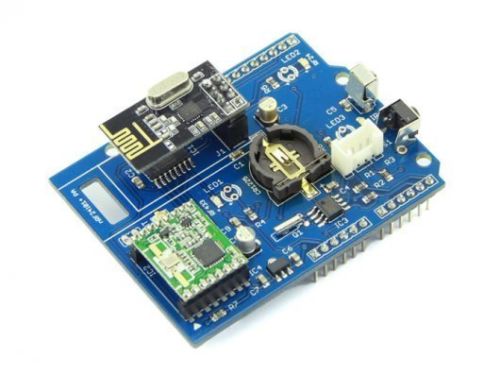
http://www.ebay.com/itm/WireLess-Gate-Shield-DIY-Maker-Seeed-BOOOLE-/171713943896?hash=item27faf2d958It has both NRF24L01+ and RFM69HW radios.
-
The first pcb's have arrived today.
They came a bit faster from dirtypcbs.com, than I had expected. So haven't even sourced the components yet.
So need to look into that the next couple of days.
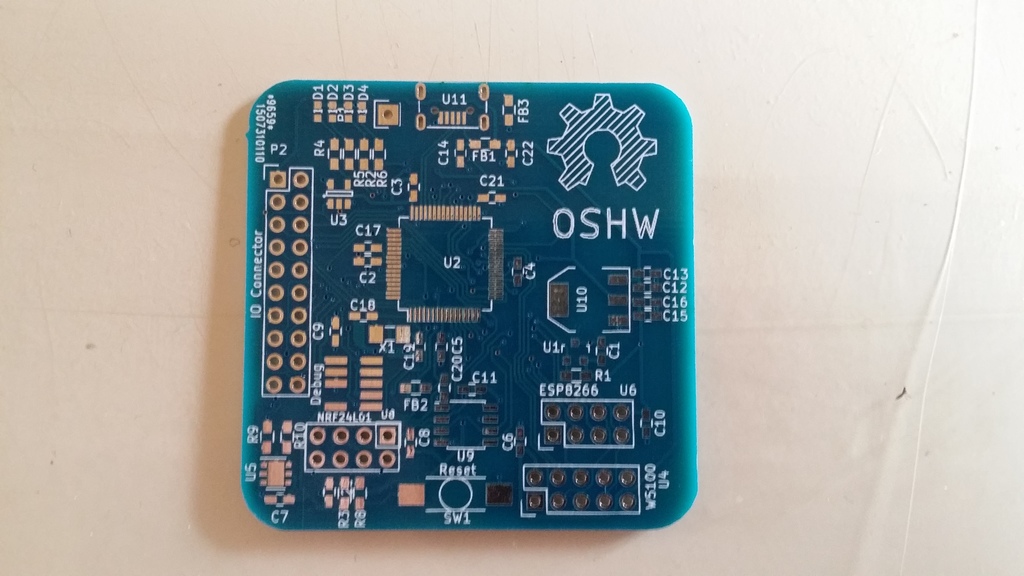
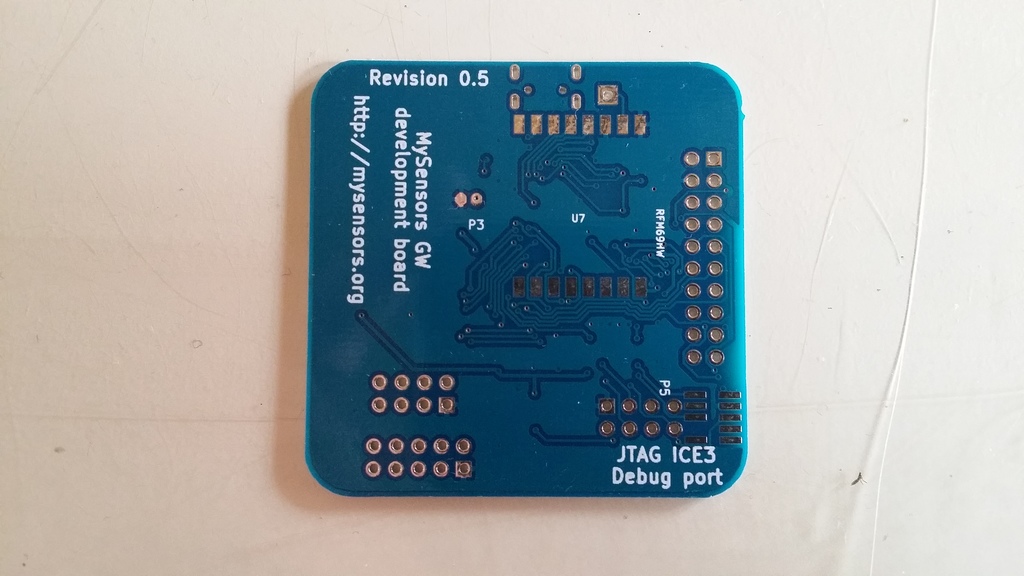
with W5100 / NRF module "mounted" :
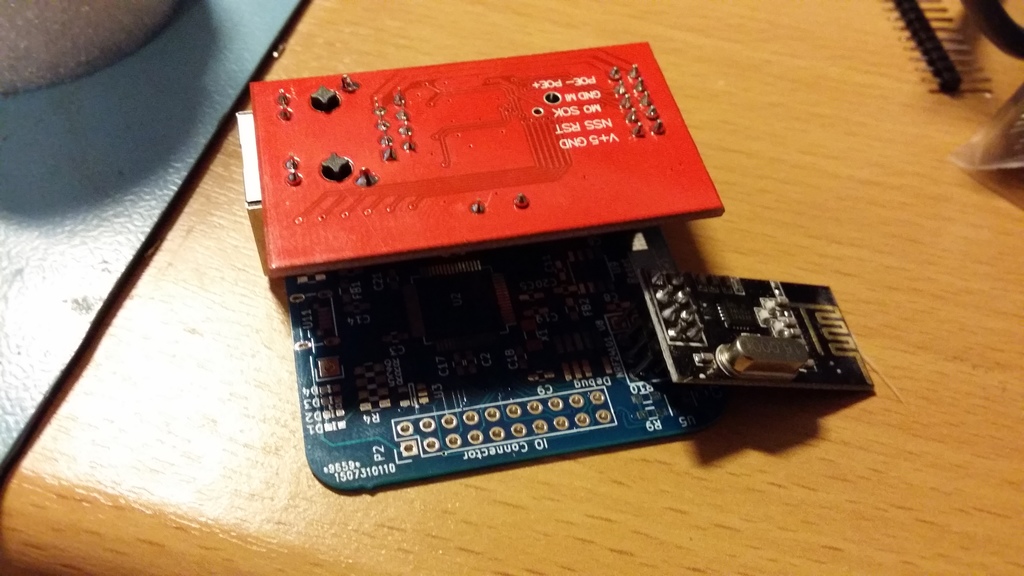
-
@ServiceXp
As we need to bring things to life on a new MCU core (Cortex M0), I decided to just make a "simple" dev board, without holes. They will probably be added on the next iteration of the board. (Besides that, 3 of the corners are a bit crammed with components, so no place for the holes anyway.)
-
@tbowmo: very beautiful board. I can't wait to see how it will work. And your feedback about dirtypcb. I often use seeed for their price. But dirty seems good too regarding their shipping rates. I like osh sometimes for their beautiful boards.
-
thx good to know.
-
great :clap:
-
Just learned a lesson the hard way, the last couple of days.. Discovered that I hadn't read the datasheet for the atsamd21 good enough, so I had connected all the PINS for the SPI / UARTs completely wrong. Which means 10-12 connections that was wrong (the board uses 3 SPI ports and 2 UARTs, one SPI doubles as UART, depending on the network interface connected)
So new boards are in the pipeline from dirtypcbs.com
This is btw improved on a couple of other points, compared to the previous board. Biggest is, that it now has 4 x 3mm mounting holes, (happy now @ServiceXp ? :)). It also got a couple of extra solder jumpers on the backside, that could be used for software configurations, or test points.
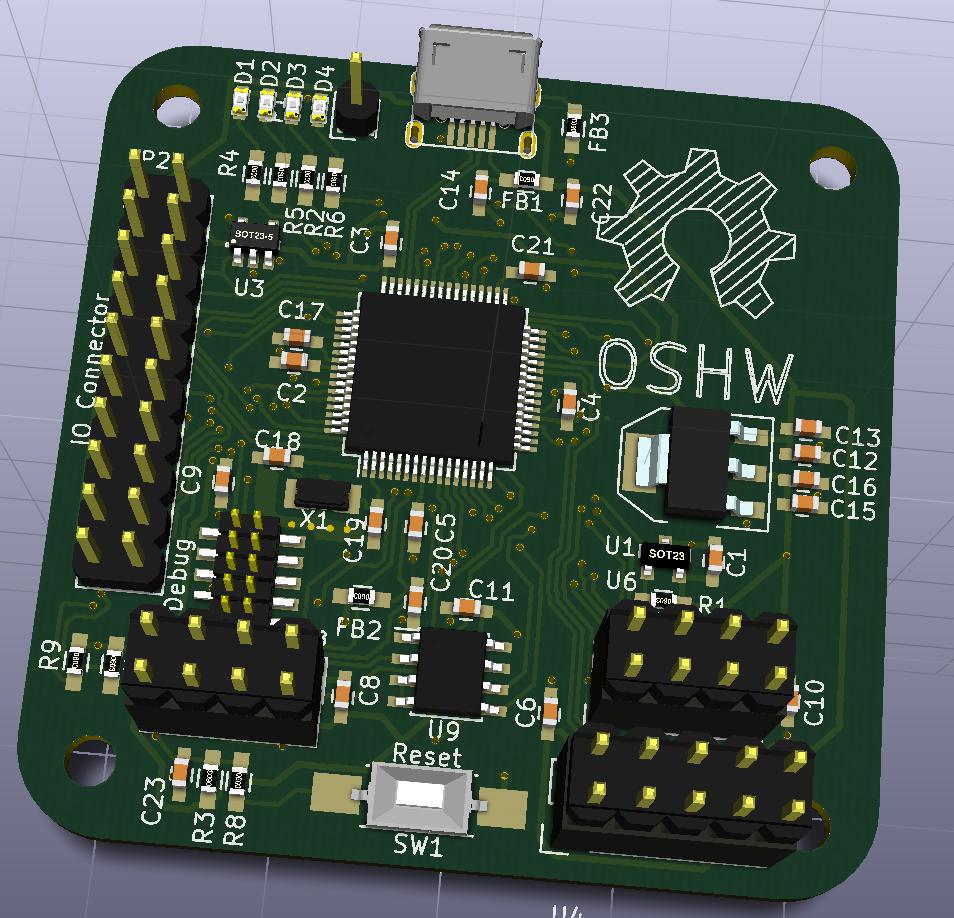
-
@tbowmo: what a bad luck! but it is so easy to miss something when you look at the datasheet size :wink:
I hope you will get it working like you want, I am sure :smiley:
I like your enlarged pads for 0402. Is it easier to solder like this? Do you handsolder it? Do you think using 0603/0805 with no enlarged pads would take same place???I am asking this for my future designs, in case. But 0402 is so small... -
atsamd21 comes in 3 variants, with 32, 48 og 64 pins (If I remember right). I'm using the 64 pin variant
If things go well with this one, then I might make a sensebender micro 2, with an 32 pin atsamd20 (almost the same as d21, but without USB host/slave capabilities)
-
Just learned a lesson the hard way, the last couple of days.. Discovered that I hadn't read the datasheet for the atsamd21 good enough, so I had connected all the PINS for the SPI / UARTs completely wrong. Which means 10-12 connections that was wrong (the board uses 3 SPI ports and 2 UARTs, one SPI doubles as UART, depending on the network interface connected)
So new boards are in the pipeline from dirtypcbs.com
This is btw improved on a couple of other points, compared to the previous board. Biggest is, that it now has 4 x 3mm mounting holes, (happy now @ServiceXp ? :)). It also got a couple of extra solder jumpers on the backside, that could be used for software configurations, or test points.

-
atsamd21 comes in 3 variants, with 32, 48 og 64 pins (If I remember right). I'm using the 64 pin variant
If things go well with this one, then I might make a sensebender micro 2, with an 32 pin atsamd20 (almost the same as d21, but without USB host/slave capabilities)
-
@ServiceXp
I just received the PCBs for the second prototype spin yesterday, the first spin had too many errors in the routing around SPI / UARTS so I decided to ditch it, and do a second spin. Dirtypcbs got some hickups processing my gerbers but finaly made the boards.
I hope that I can get around to assemble one this weekend, but I can't promise anything, as I have been loaded more than 150% with work (both from my employer, and from the wife).
